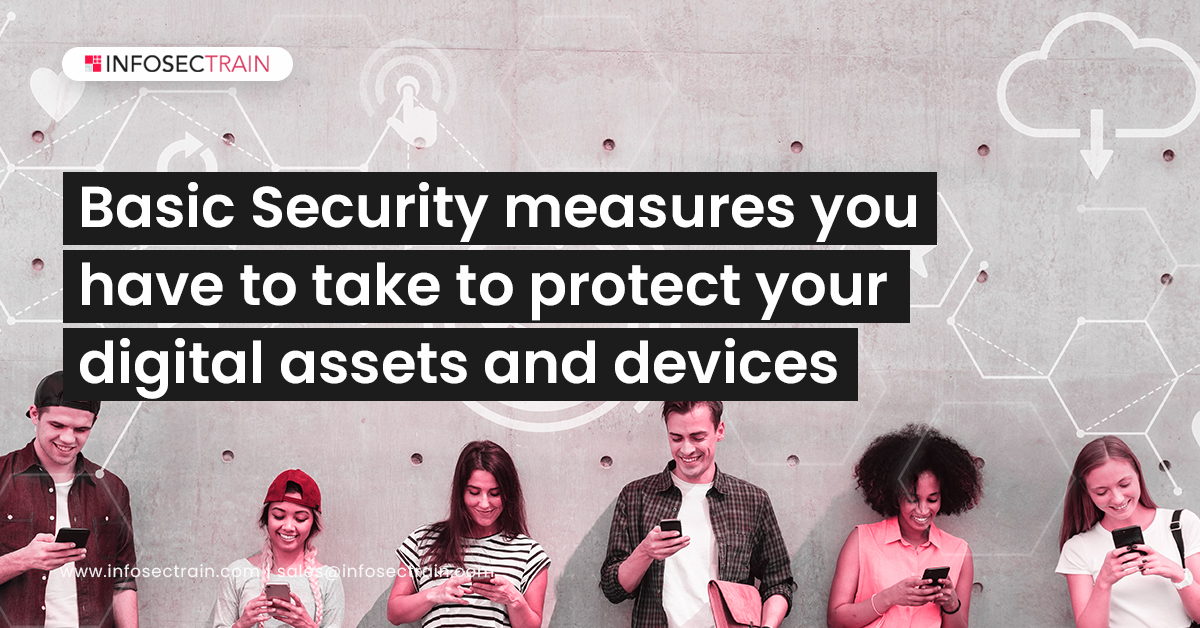Basic Security Measures You have to Take to Protect Your Digital Assets and Devices
Security is nothing but protecting your data, digital assets, and digital devices from threats. In real life, assume you have a significant sum of money to protect it from being stolen. You may use lockers, safes, and banks in the same way we use different security measures to protect your organization’s data, digital assets, and digital devices.

The objective of IT security is to prevent unauthorized users, known as threat actors, from disrupting, stealing, or exploiting these assets, devices, and services. These dangers might come from the outside or from the inside, and they can be malicious or unintentional in their origin and character.
Before going into the topic in discussion: protecting our digital assets, let me tell you how our life would be without cybersecurity measures. Assume there is no cybersecurity in this digital world where our lives mostly depend on social media, digital transactions, and the internet. It is like keeping our locker with valuable things open for thieves. Our private data may be stolen; our bank accounts can get hacked, our social media accounts can be hacked. There will be no privacy because hackers can invade it in no time. Yes, our life can be this horrible without CyberSecurity.
Before taking the security measures, you need to know what are the digital assets that your company owns:
The digital assets can include:
- Your company’s official social media account and posts in it.
- Your company’s website, domain name, and all the content in it.
- Business processes like manuals and spreadsheets.
- Visual graphics that your company generated.
- Applications that you have developed.
- Client list and customer details.
- Intellectual assets like patents and trademarks.
Now, let me tell you how we can protect our digital assets and devices with simple and basic security measures.
1. Secure the company’s Wi-Fi and stay up to date: Firstly, you must update your software frequently because the old versions can not prevent new hacking methods. Furthermore, Wi-Fi is becoming an integral element of most enterprises. As a result, you must adhere to Wi-Fi security best practices to protect your digital assets. Ensure your router is kept in a physically safe position, change the network name, ensure the firewall is enabled, and regularly update the firmware and software.
2. Maintain a Data Backup: Data Backup is a process of copying the data files and storing them in a different location. We can restore the files whenever we want. Data Backup is very important: assume your system got crashed, or assume your system got locked by some ransomware that is when you can use the backed up data. All you need to do is “ctrl c” the data and “ctrl v”; that’s it now. You need not worry about losing your organization’s data.
3. Two-step verification: In the world of cybercrimes hoping that a password can save your data is nothing but your innocence. There are many social engineering techniques where a cybercriminal can easily get the credentials of your social media accounts, your bank accounts, or any other private accounts. So the only solution to escape the attacks is to have two-step verification. This is nothing but using an OTP to login into your accounts.
This method is helpful because you will receive the OTP to your mobile (physical device), which an attacker cannot access. Even if the attacker knows your credentials, he cannot log in to your account until they have the OTP.
4. Limit Access: Restricting access to digital assets and systems reduces the risk of loss or theft. Limiting access is a crucial step in protecting digital assets. Make sure that only those workers who need to use digital assets and systems have access to them. Authorized users of these systems should follow data security best practices, including password protection and authentication while utilizing personal devices and other risk factors.
5. Cyber Insurance: Cyber insurance is kind of similar to regular insurance. For example, take health insurance. This health insurance can compensate for the money when you are ill. You can pay your medical bills with health insurance. Similarly, Cyber Insurance can compensate for the costs of your data loss and investigations of cyberattacks.
6. Document Protocols: Create a calendar and set timelines for activities like backups, upgrades, and software reviews using an ongoing schedule and calendar. Make a list of your company’s current protocols, and make sure to update them as required in the future. Guidelines for digital asset management should be viewed as a dynamic document that changes and evolves as content, applications, and programs mature and evolve.
InfosecTrain:
Infosec train is one of the leading training providers with a pocket-friendly budget. So, if you want to get a good grip on the various Security courses, then join us to experience an incredible journey with our industry experts. Our courses are available in live instructor-led and self-paced sessions, making it easy for you to take up and complete your learning/ training journey at ease. Join InfosecTrain to learn skills that can change your life.



 1800-843-7890 (India)
1800-843-7890 (India) 
